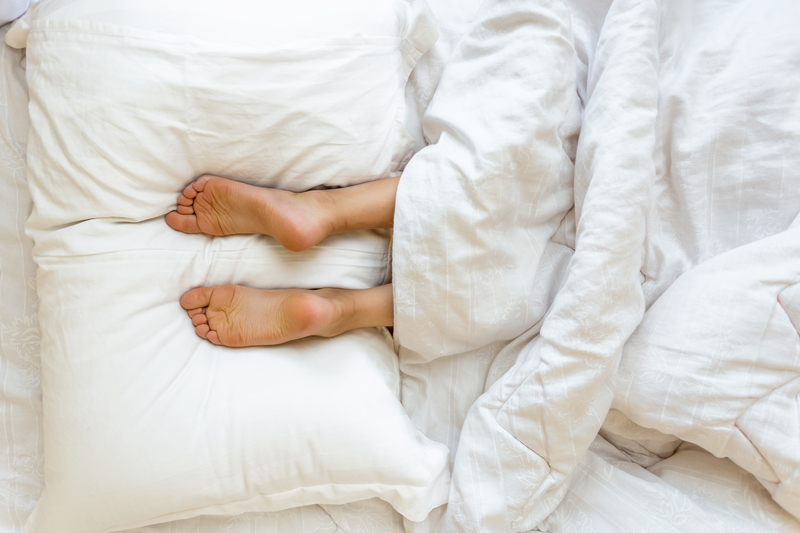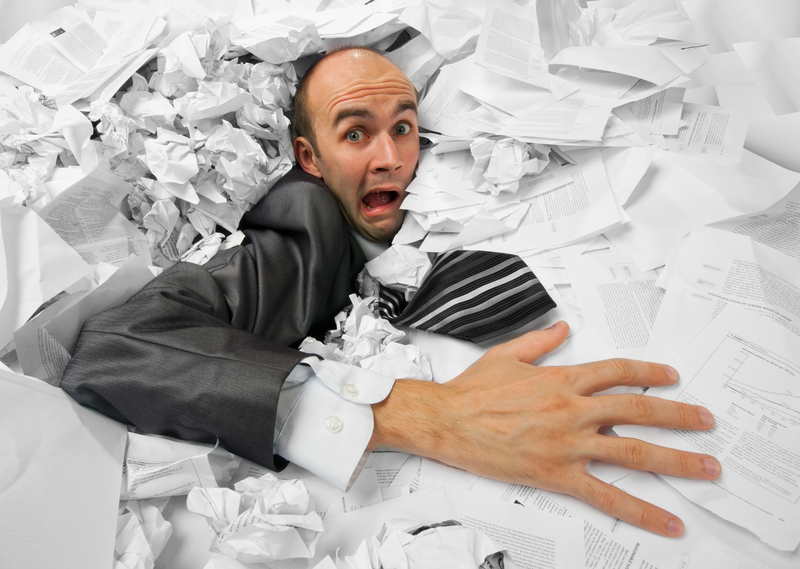Identifying the Trail of Hoarding Habits: Understanding, Recognizing, and Addressing the Challenge
Hoarding, a complex behavioral issue, can affect people of all ages and backgrounds. While it often manifests in physical clutter, the psychological roots and progressive nature of hoarding make recognizing its early signs and patterns crucial. In this comprehensive guide, we will delve deep into the process of identifying the trail of hoarding habits, explore its origins, discuss the challenges in detection, and offer actionable solutions and resources for individuals and families affected by this disorder.

What is Hoarding?
Hoarding is more than just excessive collecting or saving--it's a recognized mental health disorder characterized by persistent difficulty discarding or parting with possessions, regardless of their actual value. This behavior often leads to cluttered living spaces, impairs daily functioning, and may cause distress or interpersonal conflicts. Recognizing the trail of hoarding habits early can help in seeking timely support and intervention.
- Hoarding is a mental health disorder.
- It's different from just being a collector or a bit messy.
- Early detection can prevent severe outcomes, such as unsafe living conditions or health complications.
Understanding the Roots: Psychological Aspects Behind Hoarding Patterns
To truly identify the trail of hoarding behaviors, it's important to understand their psychological underpinnings. Hoarding disorder often co-occurs with other conditions such as anxiety, depression, and obsessive-compulsive disorder (OCD). Emotional attachments to objects, fear of losing important information, perceived utility for the future, or traumatic life events can trigger and sustain hoarding tendencies.
- Emotional attachment: Many individuals assign special meaning to items, believing them irreplaceable.
- Anxiety and fear: Fear of making the wrong decision by discarding things amplifies the cycle.
- Perfectionism: Not discarding until things are sorted "perfectly" often leads to procrastination.
- Past trauma or loss: Hoarding may serve as a coping mechanism after traumatic events loss or deprivation.
Because of these psychological complexities, simply clearing clutter isn't enough--addressing the mindset is a vital component in disrupting the chain of hoarding habits.
The Trail of Hoarding: From Early Signs to Severe Patterns
How do you identify the trail of hoarding habits? It's rarely a sudden shift, but rather a gradual accumulation of behaviors and items over time. By learning the stages and subtle cues, one can distinguish normal collecting from emerging hoarding disorder.
Early Red Flags of Hoarding Behaviors
Spotting the early signs can be challenging, especially if you're not aware of the subtle markers. Some early indicators include:
- Difficulty discarding objects, even those without apparent value
- Over-attachment to possessions and distress when considering letting go
- Growing piles of items in living spaces, initially confined to private areas
- Disorganization--rooms slowly losing their intended function
- Making excuses to keep things "just in case"
- Feeling overwhelmed by the idea of tidying or decluttering
Often, these signs of hoarding habits are masqueraded as quirks or simple messiness. Regularly bringing new items home without genuine need, reluctance to invite others into one's living space, or lying about the state of the household are important clues.
Progressive Stages of Hoarding Disorder
As the hoarding behaviors progress, the impact becomes more noticeable and severe. The trail often unfolds in the following stages:
- Mild accumulation: Clutter is present but contained. Social, work, or home life is largely unaffected.
- Moderate hoarding: Clutter begins to block parts of rooms, creating obstacles. Finding everyday items becomes difficult. Relationships may feel strained due to embarrassment or secrecy.
- Severe hoarding: Clutter overtakes entire rooms, making areas unusable. Health and safety risks increase, with heightened fire hazards, mold, or even pest infestations. Social isolation often worsens.
Each stage represents a crucial point in identifying hoarding habits and offering timely intervention.
Common Types of Items Hoarded
There are various forms of hoarding, with some individuals focusing on specific types of items. Recognizing the pattern or type can assist in identifying the hoarding trail:
- Newspapers and magazines
- Clothing and textiles
- Food or perishables
- Household goods
- Mail and paperwork
- Electronics and broken appliances
- Collectibles and memorabilia
- Animals or pets (animal hoarding)
While the nature of hoarded items varies, the underlying compulsion to keep and accumulate remains a constant.
Why Early Identification Matters: Impacts and Consequences
Recognizing hoarding habits early is critical. Without intervention, hoarding can escalate, leading to:
- Unsafe living conditions (fire risk, tripping hazards, blocked exits)
- Poor hygiene and health problems (mold, dust, infestations)
- Social isolation and damaged relationships
- Impaired daily functioning (difficulty cooking, cleaning, moving around the home)
- Legal and financial troubles
By identifying the trail of hoarding in its initial stages, families and individuals can seek professional help, prevent emergencies, and improve quality of life.
Key Differences: Hoarding vs. Collecting vs. Clutter
It's vital to distinguish compulsive hoarding from ordinary collecting or household clutter. Here's how they differ:
-
Collecting:
- Organized, focused on a particular type of item (e.g., stamps, coins)
- Intended for display or enjoyment
- Rarely disrupts daily living
-
Clutter:
- Temporary disorganization due to busy schedules or life events
- Easily resolved by tidying
- No emotional attachment to most objects
-
Hoarding:
- Excessive accumulation, often of low-value or useless items
- Severe difficulty discarding possessions
- Living spaces significantly compromised
- Emotional distress at the thought of discarding
An objective assessment of hoarding behaviors should consider function, emotional response, and impact rather than just the visible clutter.
Techniques for Identifying Hoarding Habits in Loved Ones
While self-awareness plays a critical role, often it's concerned friends or family who first notice the signs of developing hoarding disorder patterns. Approaching the topic with empathy and concern is key:
- Observe changes: Noticing increased secrecy about living conditions or new shopping habits
- Look for declining hygiene: Excess stuff making cleaning challenging
- Track mobility and safety: Difficulty moving around the home, blocked entryways, or exits
- Listen to language: Expressions like "I might need it someday" or "It has sentimental value"
- Offer help, not judgment: Frame concerns as care for safety and well-being
Identifying hoarding tendencies is easier when you focus on patterns over time, rather than isolated incidents.
Assessment Tools: How is Hoarding Diagnosed?
Professional assessment is vital for a conclusive diagnosis. Mental health experts may use several tools when identifying hoarding disorder:
- Structured interviews: In-depth discussions about behaviors, struggles, and impact
- Standardized questionnaires: Tools like the Hoarding Rating Scale (HRS)
- Clutter Image Rating (CIR): Comparing living spaces to standardized images depicting different levels of clutter
- Observation: Professional home visits to assess the environment's condition
These tools, paired with medical and psychiatric evaluations, guide the identification and treatment of hoarding disorders.
Techniques for Self-Assessment: Are You Developing Hoarding Habits?
If you suspect that you or someone you love is developing a hoarding tendency, ask yourself the following questions:
- Do you repeatedly acquire items you don't need?
- Is it extremely difficult or distressing to throw things away?
- Have you noticed rooms becoming less functional due to items?
- Do you avoid inviting people over due to embarrassment about clutter?
- Are your living conditions becoming less safe, clean, or comfortable?
An honest self-assessment is a powerful step in identifying the trail of hoarding habits in its earliest stages.
Breaking the Cycle: Approaches and Interventions for Hoarding Behaviors
Identifying the trail of hoarding habits is only the beginning; effective intervention is equally important. Here are proven strategies and resources:
1. Therapy and Counseling
- Cognitive Behavioral Therapy (CBT): The most effective approach, helping individuals understand triggers, challenge beliefs about possessions, and manage anxiety around discarding
- Motivational Interviewing: Building readiness and motivation to change
- Group Therapy: Peer support helps normalize experiences and reduce shame
2. Professional Organizers and Declutter Coaches
- Specialists who understand hoarding can provide practical guidance and hands-on support
- Nonjudgmental, step-by-step approaches tailored to individual readiness
3. Medical and Psychiatric Support
- Treatment of co-occurring anxiety, depression, or OCD with medication as needed
- Comprehensive health assessments to address physical issues stemming from a cluttered environment
4. Safety and Crisis Intervention
- In severe cases, interventions by adult protective services or local authorities may be necessary to restore safe living conditions
- Emergency clean-outs must be handled with care to avoid trauma and relapse
Helping a Loved One: Sensitive Support Strategies
When you notice the markers of hoarding in someone you love, your response can make all the difference. Keep these tips in mind:
- Show empathy and patience; "curing" hoarding takes time
- Avoid blame or forceful clean-outs; these worsen trust and shame
- Celebrate small wins and incremental progress
- Connect your loved one with hoarding-specific resources and professionals
Long-Term Solutions: Preventing Hoarding Relapse
Sustainable recovery from hoarding requires ongoing support:
- Routine check-ins from supportive friends, family, or professionals
- Continued counseling or peer support groups
- Simple organizational systems that prioritize accessibility and safety
- Mindfulness and stress reduction practices
By prioritizing continuous care, you can significantly reduce the risk of relapse.

Resources for Hoarding Support
- International OCD Foundation Hoarding Center
- National Alliance on Mental Illness (NAMI)
- Institute for Challenging Disorganization
- Local support groups and online communities
Utilizing these resources can empower individuals and families to break free from the pattern of hoarding and reclaim their living spaces and lives.
Conclusion: Identifying and Interrupting the Trail of Hoarding Habits
Understanding and identifying the trail of hoarding habits is the first step toward compassionate intervention and sustainable recovery. Early signs may be subtle, but with keen observation, empathy, and the right resources, it's possible to change the course of this challenging disorder. Whether you are concerned about yourself or a loved one, remember: help and hope are always within reach.
By educating yourself on the markers, progressions, and effective strategies for hoarding disorders, you can make a meaningful difference in your life or the lives of those you care about. Never underestimate the power of small steps; even the most overwhelming clutter can be tackled, one courageous decision at a time.



